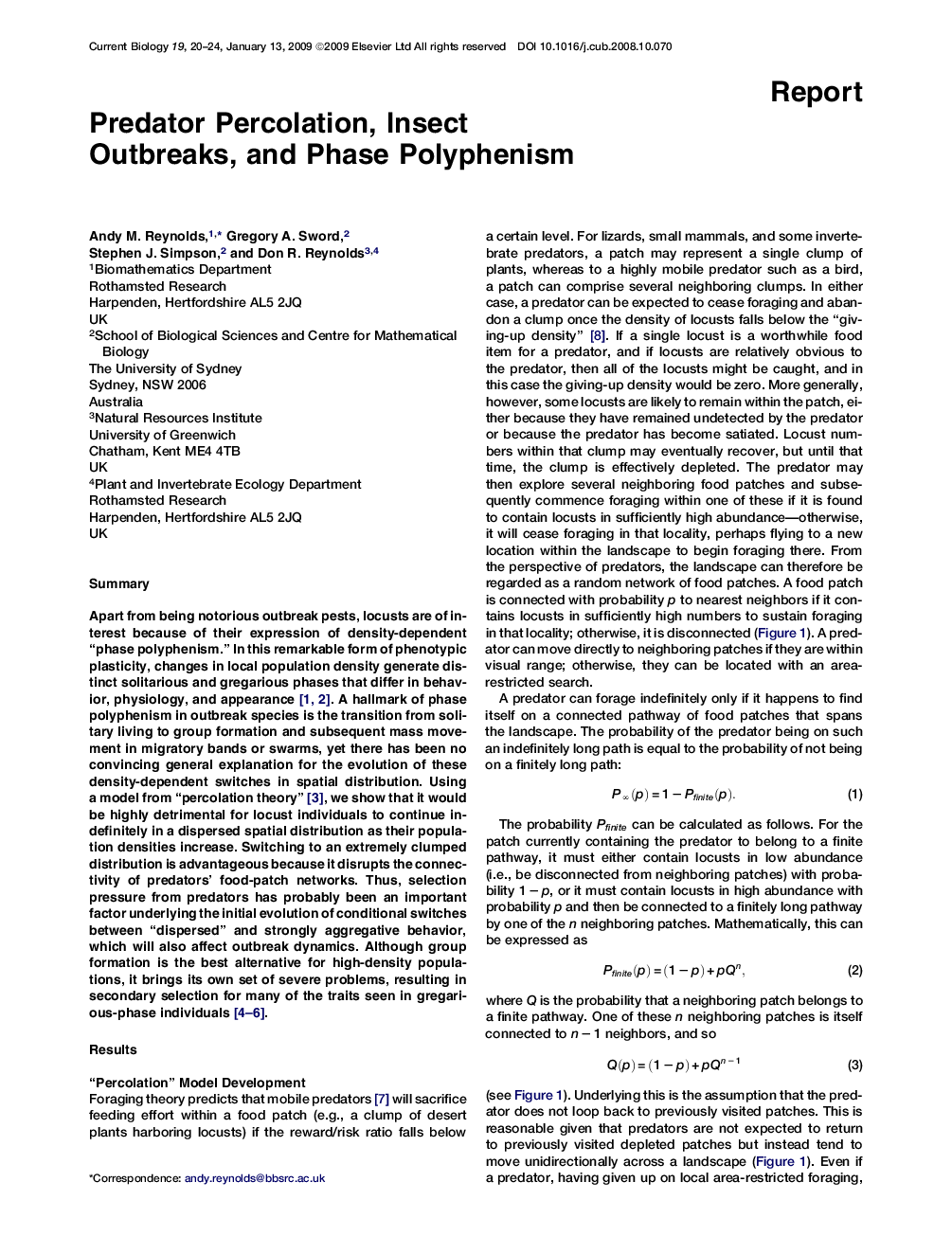| کد مقاله | کد نشریه | سال انتشار | مقاله انگلیسی | نسخه تمام متن |
|---|---|---|---|---|
| 2043654 | 1073372 | 2009 | 5 صفحه PDF | دانلود رایگان |

SummaryApart from being notorious outbreak pests, locusts are of interest because of their expression of density-dependent “phase polyphenism.” In this remarkable form of phenotypic plasticity, changes in local population density generate distinct solitarious and gregarious phases that differ in behavior, physiology, and appearance 1 and 2. A hallmark of phase polyphenism in outbreak species is the transition from solitary living to group formation and subsequent mass movement in migratory bands or swarms, yet there has been no convincing general explanation for the evolution of these density-dependent switches in spatial distribution. Using a model from “percolation theory” [3], we show that it would be highly detrimental for locust individuals to continue indefinitely in a dispersed spatial distribution as their population densities increase. Switching to an extremely clumped distribution is advantageous because it disrupts the connectivity of predators' food-patch networks. Thus, selection pressure from predators has probably been an important factor underlying the initial evolution of conditional switches between “dispersed” and strongly aggregative behavior, which will also affect outbreak dynamics. Although group formation is the best alternative for high-density populations, it brings its own set of severe problems, resulting in secondary selection for many of the traits seen in gregarious-phase individuals 4, 5 and 6.
Journal: - Volume 19, Issue 1, 13 January 2009, Pages 20–24